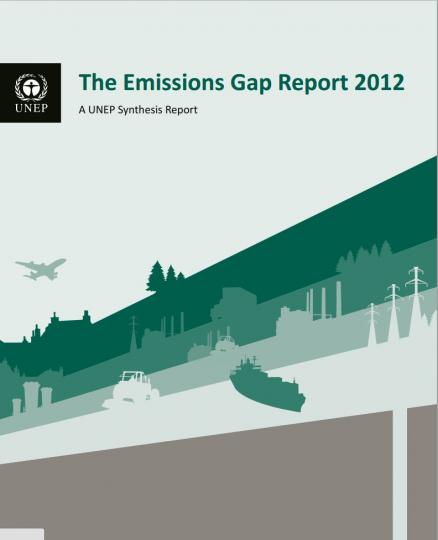Two fundamental questions in the global climate negotiations include: 1. Will the pledges made by countries to reduce greenhouse gas emissions be sufficient to achieve the 2.0 degree or 1.5 degree Celsius temperature limits by year 2020 or will there be a gap between the level of ambition that is needed and what is expected as a result of the pledges? 2. If a gap exists, in what ways can it bridged? Since 2010, UNEP has been convening scientists and experts to answer these questions through the development of the annual “emissions gap” report. The 2012 report provides the following information:
· An update of global greenhouse gas emission estimates, based on a number of different authoritative scientific sources;
· An overview of national emission levels, both current (2010) and projected (2020) consistent with current pledges and other commitments;
· An estimate of the level of global emissions consistent with the two degree target in 2020, 2030 and 2050;
· An update of the assessment of the "emissions gap" for 2020;
· A review of selected examples of the rapid progress being made in different parts of the world to implement policies already leading to substantial emission reductions and how they can be scaled up and replicated in other countries, with the view to bridging the emissions gap.
The report gives an updated estimate of the 2020 emissions gap of 8 to 13 gigatonnes of equivalent CO2, larger than earlier estimates because of higher than expected economic growth. Current global emissions are around 50 gigatonnes per year of equivalent CO2 which is substantially higher than the emissions level in 2020 consistent with a likely pathway of staying within the two degrees climate target. The report also finds that policy actions such as building codes, appliance standards, and bus rapid transit systems are achieving substantial reductions in greenhouse gas emissions even though they are largely being implemented because of local and national priorities. If scaled up, these and other policies can make a major contribution to closing the emissions gap.
Credit: UNEP.




